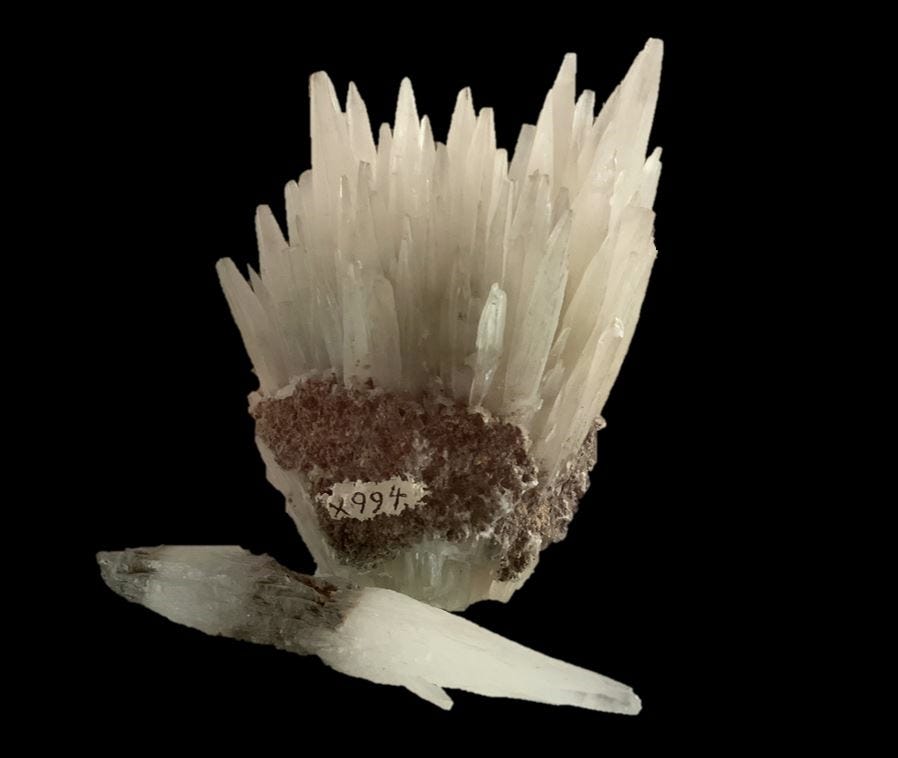William Frederick Petterd was known as the father of mineralogy in Tasmania. His publication - The Catalogue of the Minerals of Tasmania, published just after his death in 1910 - along with the more recent editions, is still a useful reference.
While I was looking in Trove (National Library of Australia) the other day for information about the “chrome” cerussite (Mineral Matters #736), I came across a newspaper article (in the Hobart Mercury, July 4th, 1911) that talked about Petterd’s extensive mineral collection being put on display in the Tasmanian Museum in Hobart. That would have been a sight to behold!
These days, the minerals on display at the museum, are fairly insignificant, although they do include some of Petterd’s collection (which is housed in the museum, but on a 900(?) year loan from the Royal Society of Tasmania).
One of the specimens is shown below. I looked up the number (994) in Petterd’s mineral catalogue (yes, I have a copy 😁), and it confirmed what I thought - a “Cumberland”, England, aragonite.
The article in Trove needs a lot of work to correct the OCR errors. One day, if/when I get time. For example: “When the colours are transparent and rich and the stones are free from fruit”. 😆
The writer, whose name does not appear in the article, appears to have a reasonable understanding of minerals, but there are errors, such as referring to crocoite as a phosphate (even Dana’s 1837 System of Mineralogy places it in the chromates group). The article says: “In Petterd's catalogue of the minerals of Tasmania, it is stated that Dundasite is often formed round a crystal of the orange-red phosphate of lead”. No it doesn’t. I checked. 😁
Below: Aragonite, Cumberland, England. Petterd Collection No. 994.





Aragonite matches specimens I have from Parkhouse Quarry, Johnny, Greystoke District, Cumbria. May well be from there.
Love description of ‘ Colours transparent and rich and the stones are free from fruit’. A wonderful land.